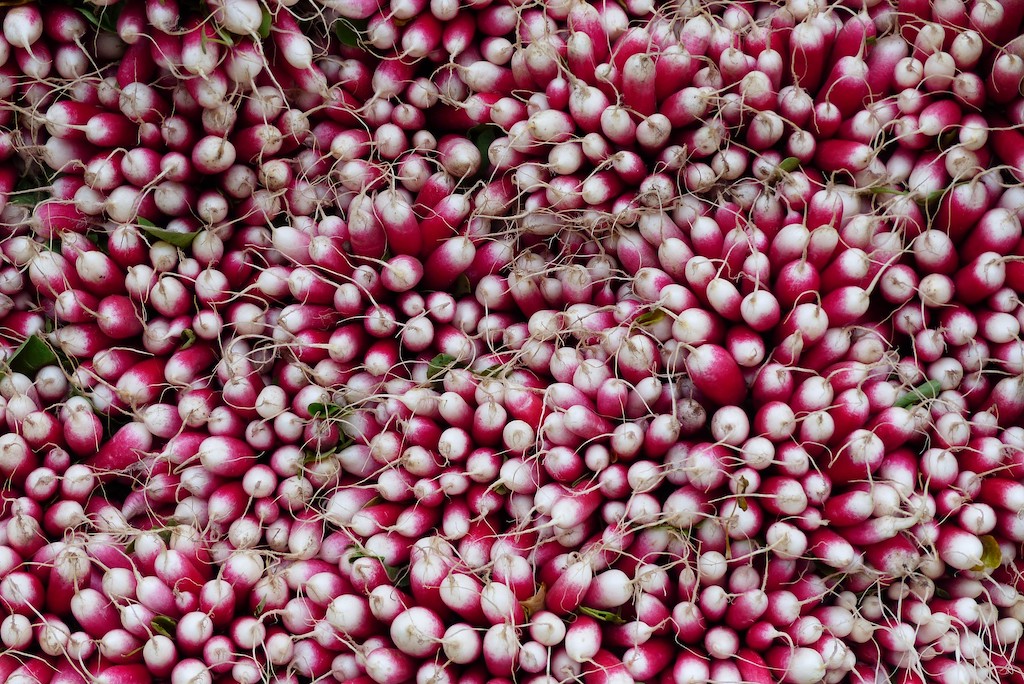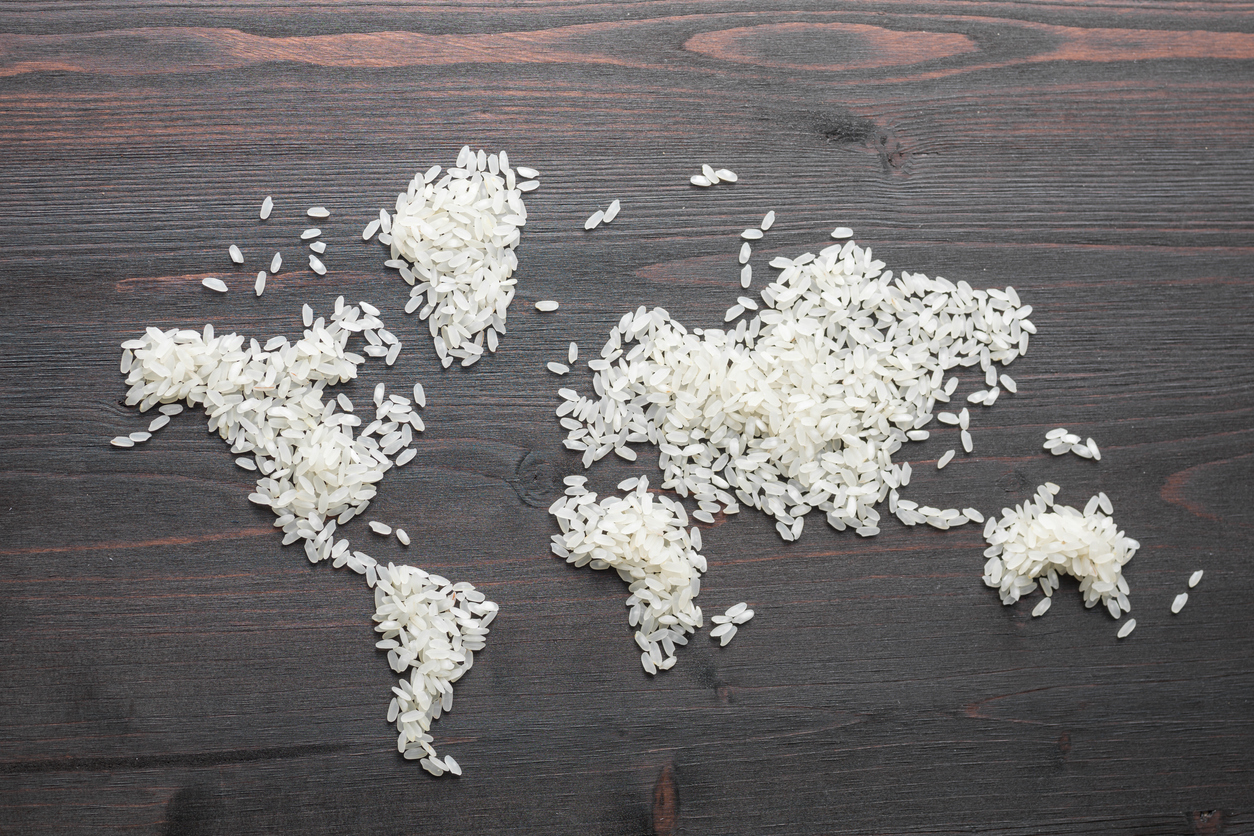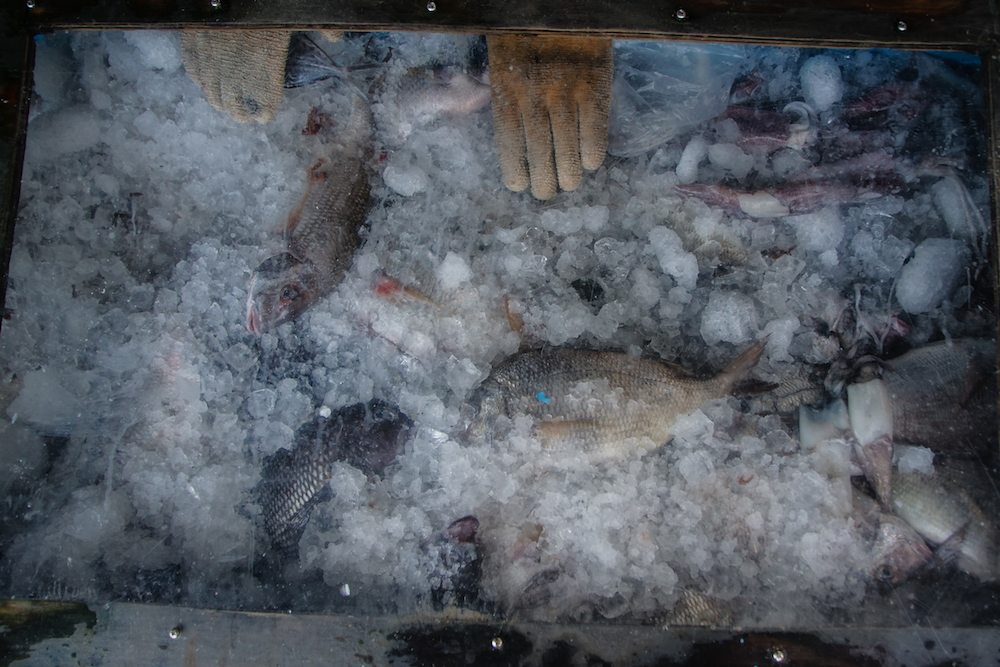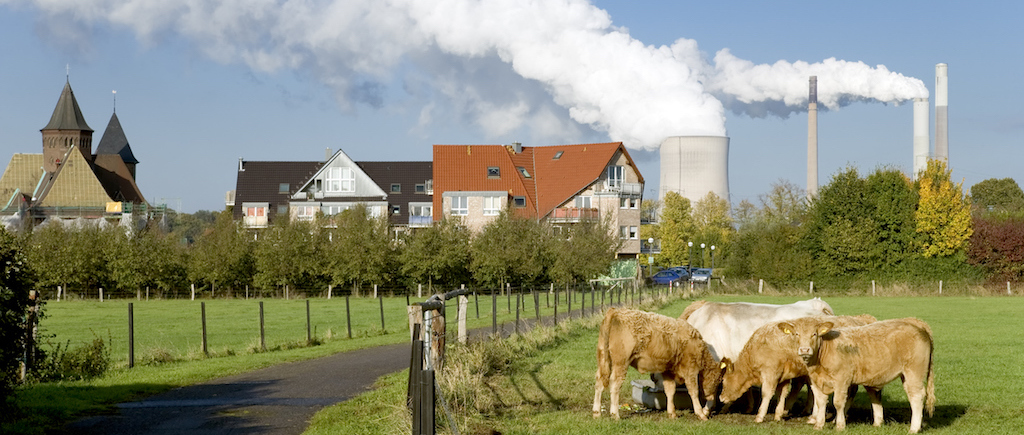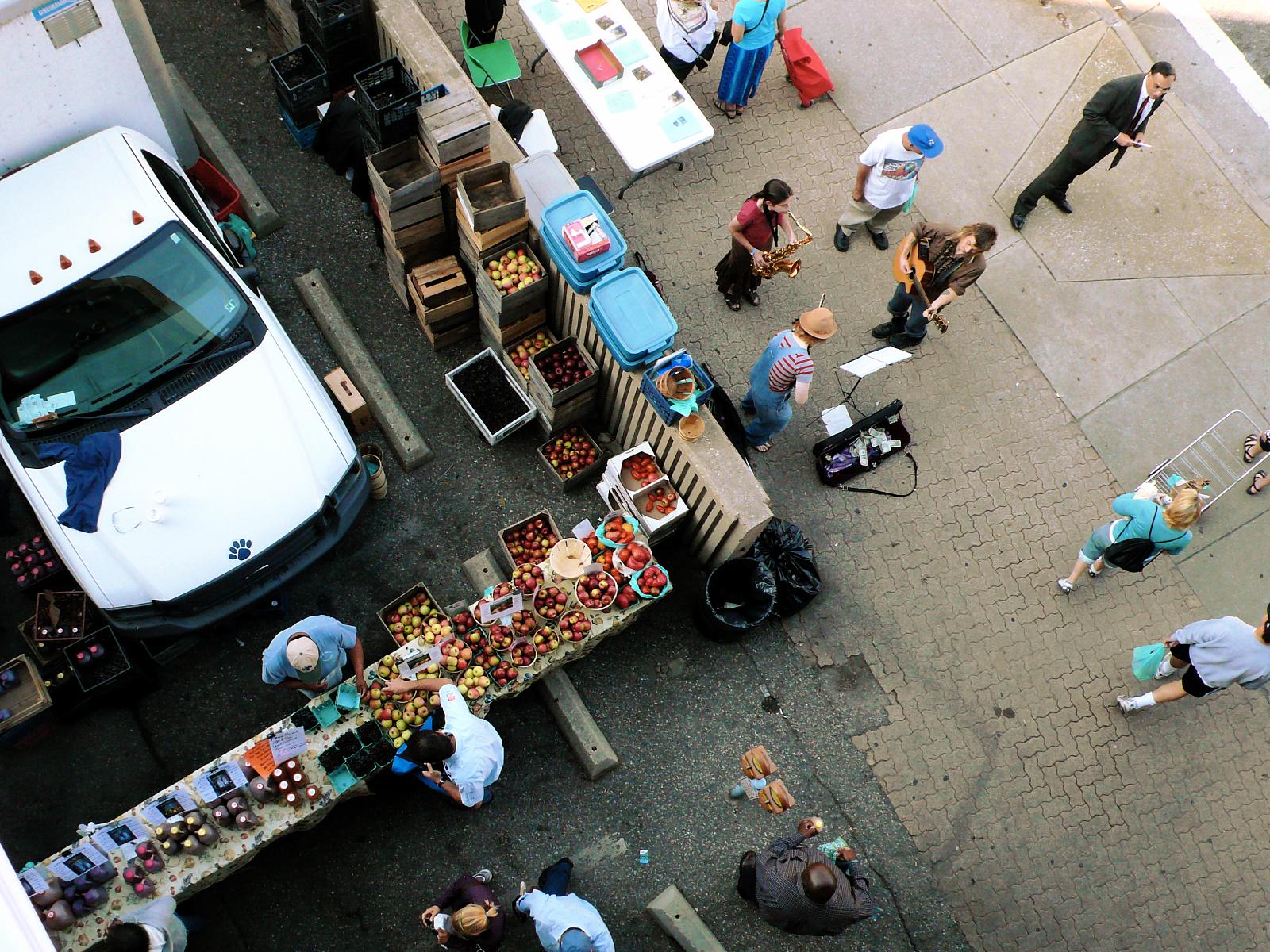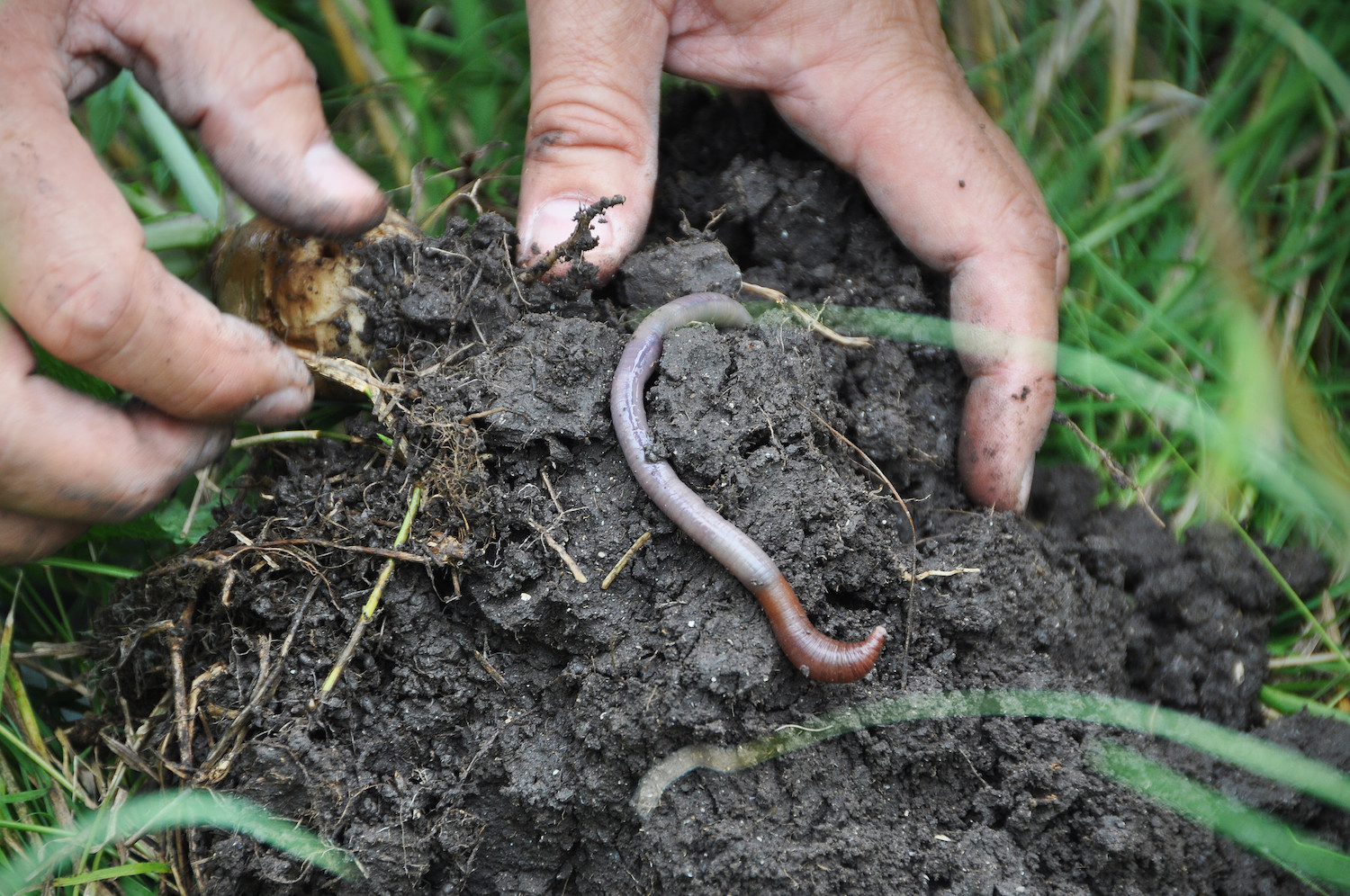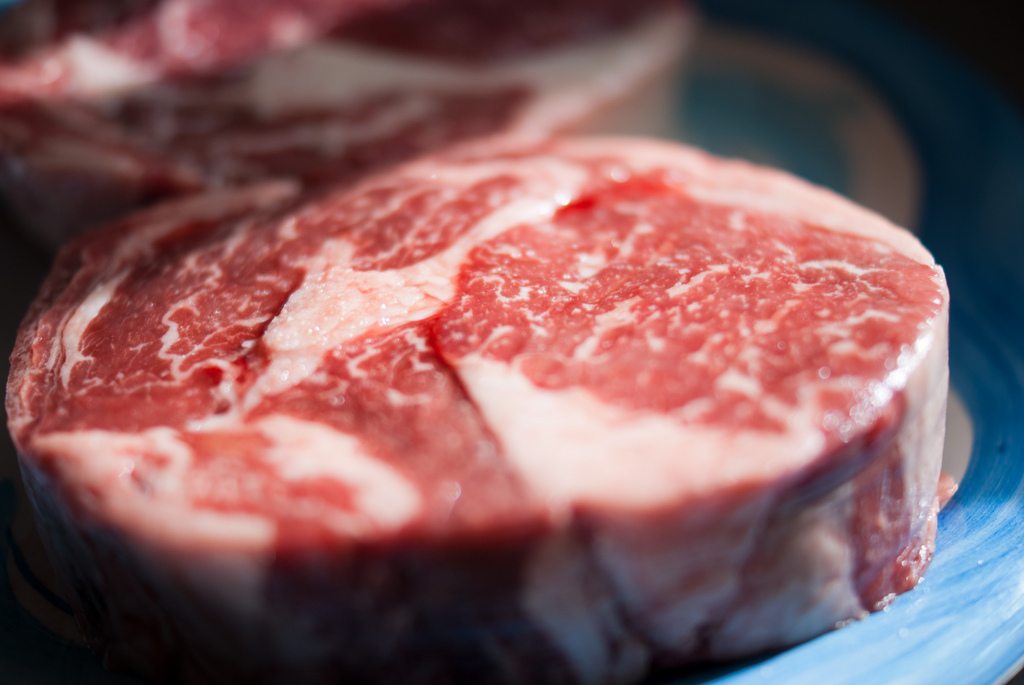Do you know the definition of “local” food? Give it a minute. Is there an official acceptable distance for a tomato to travel? How about a gallon of milk? And who gets to decide what that measure is?
The United States Department of Agriculture (USDA) defines “local” as a measurable distance between food production and consumption that is four hundred miles or less. That means “local” food you buy in New York state could come from Augusta, Maine (329 miles), Concord, New Hampshire (214 miles), or Youngstown, Ohio (397.7 miles) and still meet USDA’s definition of “local.”
Author Robyn Metcalfe says that we tend to measure our feelings by the distance between the producers and our plates. But, she argues, the complexity and value of a food supply chain relates to how many intermediaries there are between a producer and consumer. So, it’s not necessarily all about the measured distance between you and your food.
Here we present Metcalfe’s case that geographic sources for our food should be dictated by climate, cost of land and labor, abundance of resources, and nearby transportation networks, in an excerpt from her new book, Food Routes: Growing Bananas in Iceland and Other Tales from the Logistics of Eating, out this month from MIT Press.
Food and the city
The relationship between food and cities is a long story, and its ending is still not in sight. The association is emotional yet engineered, inextricable yet fluid. We want our food close to us, yet food production is a messy business that’s costly and dependent upon scale. The placement of food in relation to the cities where we live affects its cost, safety, and environmental impact. Distance, geography, economics, and transportation infrastructure weigh in as food finds its place in our cities, and a sense of place related to food informs where and how our supply chains work.
 The MIT Press
The MIT Press Robyn Metcalfe’s new book, “Food Routes,” explores the relationship between food and cities
Today, we label our preference for food grown nearby the “local food movement,” and describing the return of food to our cities as a “movement” is particularly apt. Food logistics is all about movement. Self-conscious movement is an obsession of chefs these days. Menus tout local sources and take great pains to list all their suppliers. Chefs and grocery stores become storytellers, often including photos of the families who harvest their produce and maps that prove the proximity of the purveyors. During an interview with one of our star restaurant owners in Texas, I noticed a map on the wall that illustrated all the farms that provided ingredients to the chef. This story appears on menus, websites, and similar wall charts these days as chefs work to satisfy consumers’ demands for locally sourced food.
While farmers should be encouraged as entrepreneurs and small business owners, they struggle to find the time to build and operate local businesses, connecting with customers like this chef. Two of our beloved local farms in Austin announced they were closed or dramatically downsized just this year. Farming is a 24/7 occupation, and giving up farm time to market produce is often impractical.
And the pain points for traditional, land-based food production are enormous. One of those Austin farms faced over $100,000 of storm damage from a winter storm. Crop insurance, subsidies, climate changes, government regulations and trade policies, labor, and . . . weeds. All of these friction points make food production in general more and more stressful and unsustainable. They are almost deal-breakers for the creation of a local food system.
Still, the pressure to get food from local producers is real, and it can have unintended consequences for everyone. Direct-to-consumer sales (the term the USDA uses to describe farmers’ markets, the direct sales of food from farm to local chefs, and community-supported agriculture) aren’t nearly as simple as they might sound. For the farmer, selling and delivering food to customers requires access to trucks (sometimes refrigerated trucks) and drivers. But these trucks are often partially filled, consuming energy for a high cost per calorie. Chefs like the one across the table from me that day are taking deliveries from up to 30 trucks a day, each with a locally produced ingredient. The expansive carbon footprint cannot be sustainable. But the customers don’t see this side of the supply chain. They only see the distance between farms and tables. And distance is both a rational, measurable concept and one that’s entirely in our heads.
Local and global food systems are caught in a contest for jobs, nutrition, cultural identity, and environmental integrity. And this is not a new conundrum. As far back as the fourth century, observers noted that cities needed diversified sources of food in order to provide food security if trade was cut off or if local crops were infested or damaged by weather.
Food at scale
Bigness has come to mean badness. Profit commandeering principles, people sacrificed for efficiency, truth traded for image. Coffee beans picked and dried by slave labor. Vanilla beans harvested by food mafias that sell on the black market. Smallness implies trust, humanity, and transparency in our minds. A family that farms in Vermont or a Nigerian goat farmer. And since humans don’t work well with complex systems, the simple idea of “big is bad, small is good” sits in the sweet spot for most of us as an operating principle for choosing who we want to produce our food and where we want them to be relative to our cities. Those who distrust big food companies believe small farms are more transparent and trustworthy. And consumers who worry about food security feel that having food grown nearby is a wise strategy for cities that may be cut off from long-distance supply chains. These contentious perspectives of size sit in a landscape of space and distance. The big guys are far away, and the little guys are nearby, even if only in our imaginations. Hence the demand for local food.
Ethical sourcing, sustainable practices, and food justice are all concepts that imply that our food supply chain needs to be held accountable. So we lean into our food supply system, trying to see who is growing, processing, and shipping our food. In our collective minds, “ethical” has become synonymous with “local,” and the sustainability of our global food supply chain is often cast in terms of distance.
To understand the complex question of whether long or short food supply chains are better for us and the environment, we need to settle on a way to measure distance
The more complex, systematic way of looking at where our food comes from is found in such issues as the costs of shipping food over long distances. We consumers think that long distance travel for food is unsustainable, not to mention bad news for our tender tomatoes, which must be bred to withstand vibrating long-haul vehicles. It must cost more, damage the food, require chemicals to extend shelf life, and consume fossil fuels that end up polluting our environment. But is this really true? Are we trying to solve the right problems? And are these problems of real concern to those of us who eschew complexity? Can technology solve for bigness and create a food system that is transparent enough that we feel a close personal connection that’s not measured in terms of miles or kilometers?
To understand the complex question of whether long or short food supply chains are better for us and the environment, we need to settle on a way to measure distance. After all, no one can agree on the definition of “local.” Local in Texas is not local in Belgium. And where do we draw the line? Is food from Northern California considered “local” to Southern California? Since food is a perishable commodity, does a short trip to your plate make it fresher? Do the farm and its owner become part of our family if we can somehow “know” them by their proximity to our tables?
The USDA defines “local” as a measurable distance between food production and consumption that is four hundred miles or less. Anything sourced from a longer distance would not be considered local. Of course, four hundred miles feels like five when you’re in Texas, but in Rhode Island you can buy “local” food from any of the adjoining states. Keep in mind that the complexity and value of a food supply chain relates to how many intermediaries there are between a producer and consumer. So, it’s not necessarily all about the measured distance between you and your food.
But limiting our food sources to that four-hundred-mile radius will lead to smaller menus and higher prices. The ideal—or optimal—geographic sources for our food are dictated by climate, cost of land and labor, abundance of resources, and nearby transportation networks.
Where our food comes from is also in relation to the size of our city. New York City can keep a multitude of producers relatively nearby because of the size of the market. New York’s population of almost 9 million hungry inhabitants can support more producers than Abilene, Texas, with its population of almost 125,000, even though it’s surrounded by a spacious landscape.
Of course, global food can become local if the conditions are right. Sometimes it’s the movement of people that locates certain foods in a geographical area. Italian immigrants to the United States in the late nineteenth century brought Italian cuisine and a tomato supply chain to the Italian neighborhoods. A report published 2016 by the Royal Society indicated that almost 70 percent of the world’s crops started out in locations other than where they are grown today. For example, tomatoes grown in Italy started out in South America, and the origin of potatoes (the scourge of Ireland) is Peru. The report explains how countries that remained isolated maintained their own diverse native food lines, while those that were visited during the Age of Exploration experienced the greatest influx of crops, both as recipients of foreign crops and as exporters of native crops to the countries that sent the explorers. People bring food with them wherever they roam.
Excerpted from Food Routes: Growing Bananas in Iceland and Other Tales from the Logistics of Eating by Robyn Metcalfe, The MIT Press, 2019.
